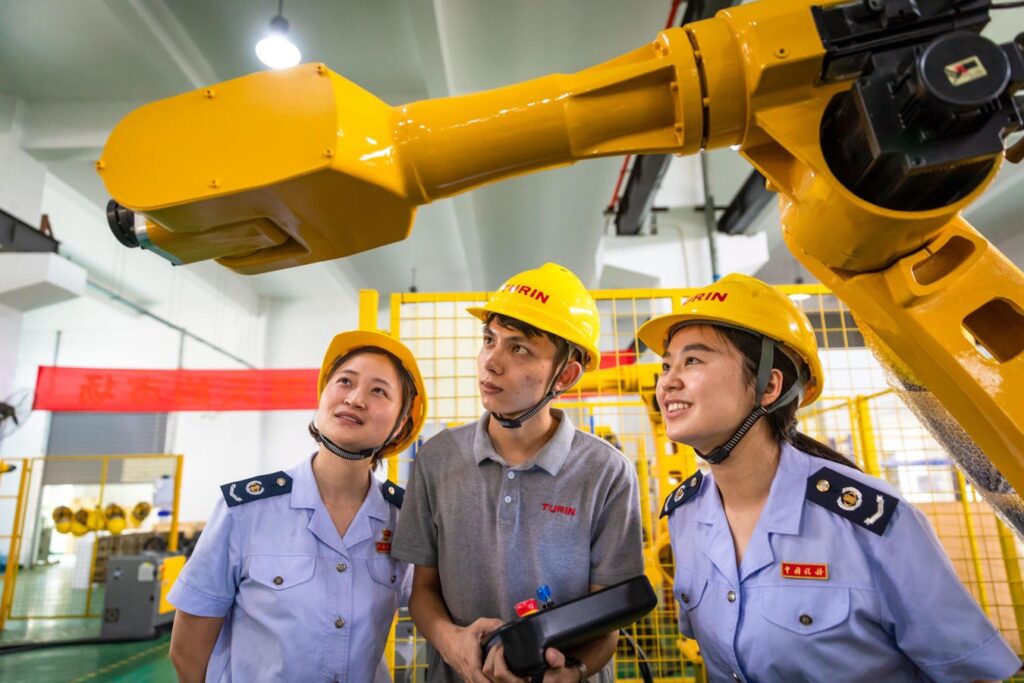Detroit used to be the richest city in America, some said it was the wealthiest in the world (in the early 1950’s). Within a period of fifty years, it became the USA’s poorest city, ignominiously falling victim to the largest municipal bond default in 2013.
I visited the city some eight years ago, to witness the kick-off of an ambitious plan to revive the city, led by Mayor Mike Duggan, with the support of local business leaders. For instance, Dan Gilbert, an insurance firm owner bought and then gave away inner-city apartments to encourage people to move back into the city.
Having spent a couple of days in Detroit last week I am pleased to report that the renewal of the city centre is bearing fruit – it is a hive of construction activity, iconic buildings have been impressively scrubbed up and there are plenty of stylish restaurants and shops.
My initial visit to Detroit sticks in my mind for two reasons. The first is that I did a speech there alongside JD Vance – my topic was how small European countries managed to achieve high growth rates and social cohesion (as an example to Detroit), and his emphasis was on the need to focus resources and policy on ‘forgotten’ parts of America like Michigan.
Our double act was good enough that we were invited to do another event in the new World Trade Centre in New York. At the time, I recall he was anti-Trump, pro-innovation and very much an advocate of third level education. A lot has changed since, but his book ‘Hillbilly Elegy’ is still worth a read.
My second memorable Detroit experience was a visit to the Ford factory in Dearborn, to witness the full power of a robot-based manufacturing line, which at times was quite intimidating. I am tempted to say that in the next ten years, robots will have a bigger impact on America’s society and economy than JD.
The rise and fall of Detroit, and its wide hinterland out to Michigan towns like Flint has been undercut by many factors – immigration, the exit of the wealthy to other America cities, a failure to renew skill sets and an industrial base, and the economic side-effect of the rise of China as a manufacturing zone.
The issue worrying people in states like Michigan is whether AI and robotics will have the same effect on the local economy, as the model of globalization was perceived to do (by the likes of JD Vance) in recent years. Indeed, there has been a flurry of articles in the US press in recent days warning that AI will wipe out swathes of jobs (for example a pwc report on Agentic AI promises cost cuts of up to 40% in the software and legal sectors).
My instinct is that new technologies do not necessarily ‘kill’ jobs but shift them to other sectors and value chains, a process that is usually contingent on the quality of education systems and government policy.
Much of the research on the potential impact of AI on work (from McKinsey for instance and most notably David Autor at MIT and Carl Benedikt-Frey at Oxford) points to a nuanced view that sees AI and robotics helping less able workers participate in the workforce, and emphasises reskilling.
The risk to this enlightened outlook is that AI is unique in the sense that its take-up is rapid, especially so within large services firms, and this may give corporations greater power over labour (and downward pressure on wages). Equally there is not enough commentary on the fact that the critical AI projects are owned by a small, connected set of investors.
In the emerging world, AI will likely have the greatest positive impact on public administration and on healthcare (through better and broader diagnoses), though employment in service sectors (especially where those services are exported) may take a hit.
With professional and specialised workers in mind, I would also like to re-state my ‘One Man and His Dog’ hypothesis as a model for how professionals can use AI. ‘One Man and His Dog’ was a cult British tv show based on sheepdog trials. In this context the sheepdog is an intelligent, non-human actor helping the human to solve a complex problem – which is what AI does. Like a dog, if mistreated or provoked, AI can bite back but in general the idea is that like the sheepdog, AI can make the professional (doctor, commando or researcher) do their job in a more effective way.
Those who worry about the labour market should instead focus on debt, and the perilous finances of the developed world. The global financial crisis demonstrated that debt can kill millions of jobs when it provokes a deep recession. To that end, the Trump budget will prove increasingly controversial, and arguably what America needs is a very different fiscal approach.
The lesson from Hillbilly Elegy is that the spoils of globalization went to the few – bankers in New York, scientists in Boston and tech firms in California. Arguably they should have paid much higher taxes and this then used to bolster education, training and infrastructure across America.
The same logic is true with AI – its commercial benefits will accrue to a very small number of people, but millions will need help readjusting to the side-effects it has on labour markets. The debt outlook makes this doubly the case and the Trump budget, which will add USD 2.4 trillion to the national debt by 20234 (according to the Congressional Budget Office) will not only break the bank but break the labour market.
Read the full article here

